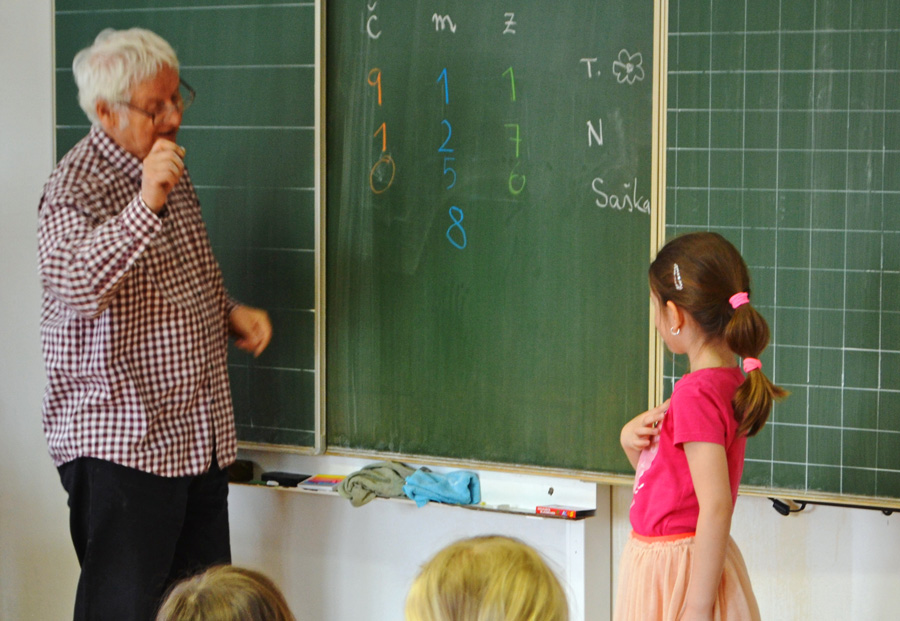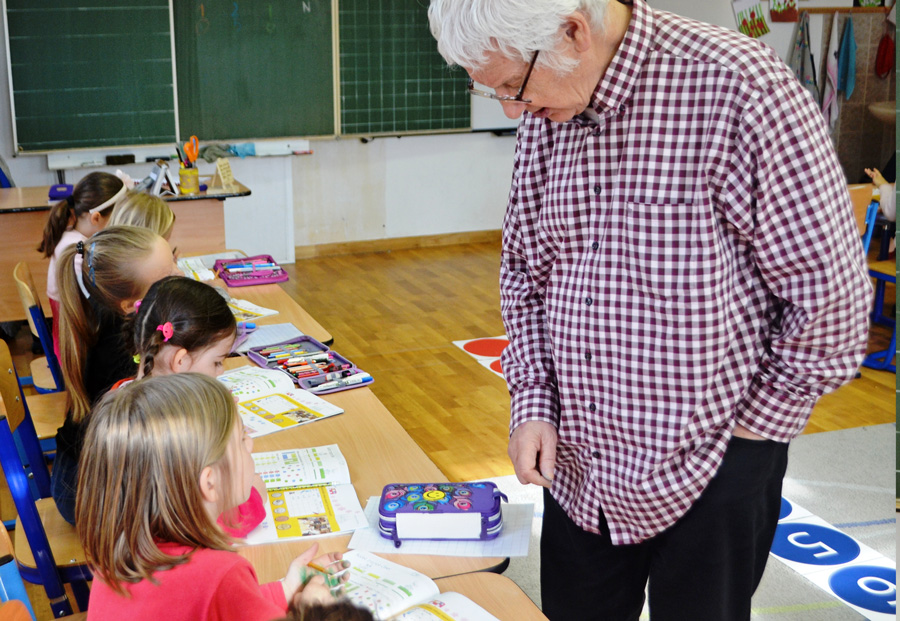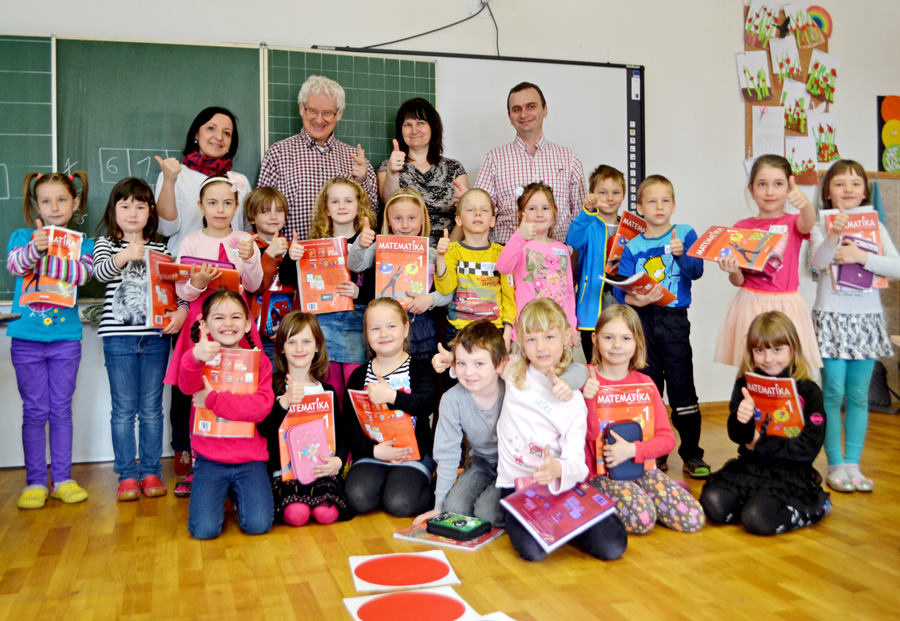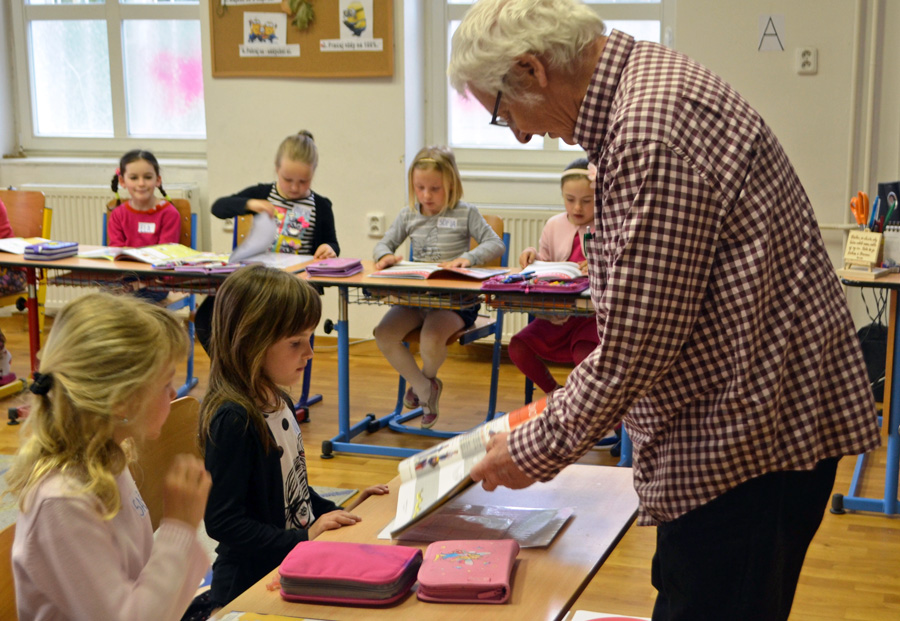Leading expert in mathematics education, Doctor Milan Hejný, returned to his birthplace in Martin to teach math to first grade students in the Lutheran Elementary School. After presenting a sample math lesson, Doctor Hejný discussed his theories with teachers, parents, and other guests.

Milan Hejný is the author of several mathematics textbooks and workbooks for first grade students, including guides for teachers. The emphasis of “The Hejny’ math method” is on students solving math problems by themselves. Students must discover how the math problem is to be addressed, and then they can find the answer. “An activity must motivate them and fun needs to be a priority,” says Dr. Hejný.
The sample mathematics lesson in the first grade class focused on addition of three different numbers. The 1A class looked for “naughty” numbers hidden in pictures of lines, pyramids, and splotchy shapes on the board. The students raised their hands because they couldn’t write the result of the math problem onto the uppermost box on the board, so they were unable to add the correct digit. Doctor assured the children that they would be “a little taller the day after tomorrow, so they would be able to write the correct number at the high fields on the board then.”

Doctor Hejný believes that WHAT is taught is not as important as HOW things are taught. Therefore he encourages teachers to maximize the involvement of the children in order to develop thinking skills. Teachers must remember that a child’s brain needs time to process new material before they can truly understand. It is fine if children make mistakes at the beginning. “Failure is the path to knowledge; the activated process in the child’s mind tells them that ‘something is out of order.’ Thus, the error is the beginning of learning!”
What should be done with students for whom the fun activity is not as important as solving the equation and finding the correct math result? Doctor Hejný advised that the success the child is experiencing should be repeated. Success is the essence of motivation—success brings the inner joy that occurs when the child solves the math issue correctly.

“For some children, the most important achievement may be the fact that he or she is able to help others,” says Doctor Hejný. Therefore, that success in helping others may be a source of motivation in their own learning. Repeating this feeling of success will positively motivate the child to intellectual effort, even when obtaining the correct result may seem unattainable.
“The teacher must discover what motivates each child. The teacher must also be careful that no child will begin to believe they are worthless, because they are not good at math. No doubt they are clever in many other ways,” adds math expert, Doctor M. Hejný.

***
| Doctor Milan Hejný is Doctor of Education at Comenius University in Prague and author or co-author of sixteen mathematics books. He has also published more than 270 articles in mathematics education. He has lectured in thirteen foreign universities and dozens of international conferences. |




As a former teacher, I really liked Dr. Hejny’s comment about allowing the child’s mind to process new material at their own pace. I also liked that he felt discovering each child’s motivation as being important in learning. It sounds like he was a benefit to the children and to the teachers in affirming or enlightening the learning process.